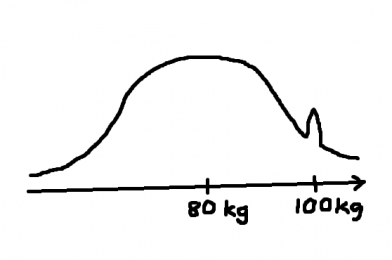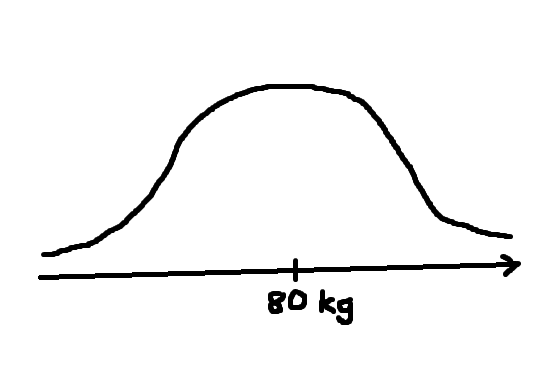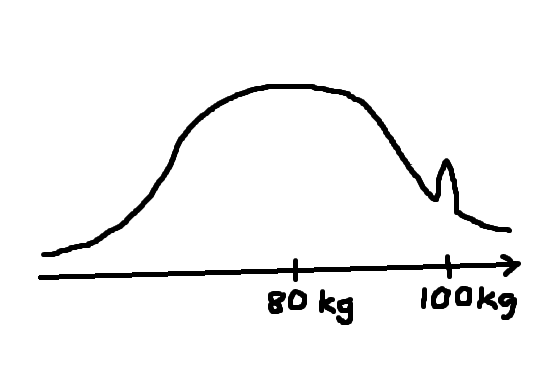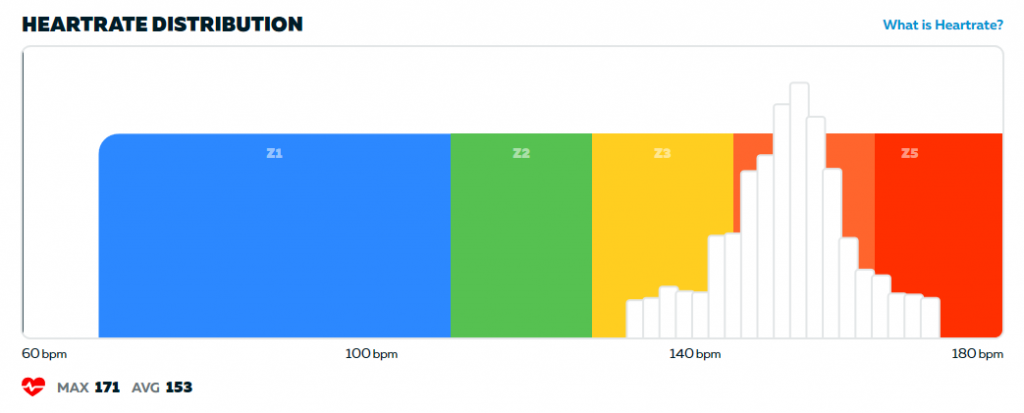If you think about sports and games and their rule sets, you can always discern some sort of ethics and ideals in them.
Take chess for example. There is nothing random about chess, except maybe picking sides. In theory, you could foresee just about everything in a chess game, as permutations or possibilities, and thus you have a fair chance to avoid disasters and to push your opponent into a disadvantageous position. The side who wins has done the calculating ahead better, and this is also the ethics of the game. The player who is the best at calculating and visualizing position deserves to win. If they didn’t deserve to win, then there would be some handicap rule that would kick in once a player becomes too dominant on the board. No, no holds barred. The smartest guy deserves to win, every time.
In football (either kind), the team that scores the most goals wins. They deserve to win because they scored the most goals. It makes them better, more ideal. Scoring more goals than the opponent is going to take both individual and team skill and efforts. The winning team was better at those skills and in those efforts, we say, and so they deserved to win. Sometimes, if it’s not our favorite team winning, we say that the opponents were just lucky or that they played unfairly or we blame it all on the referee. But all else equal, we’d say that the team that scored the most goals wins according to the rules and that they also deserved to win. The rules are aligned with our sense of ethics.
In cycling, real-life cycling, the rider who crosses the finish line first deserves to win, unless he doped or raced unfairly or dangerously. Why? Well… he was the fastest and umm… fast is good, isn’t it? Why was he the fastest? Because he was better? Better in what way? Well, he was either more talented or fitter, or he worked harder than the opponents. So talented and fit is good? Yes, that is good. The ideal rider is talented and fit. What about working hard then? Yes, that is also good. The ideal rider works hard in a race. If he is up against an equally talented and fit opponent, then he will win if he works harder and that is an ideal rider, one willing to dig deeper than the others regardless of the pain and misery it puts him in. And getting fit takes a lot of pain and misery to begin with, so someone did their homework. OK…
Talent is needed at the top level but talent alone won’t usually win a race, because a rider might be up against an equal talent, and then it all comes down to, all else equal, who dug the deepest. And we like that. We admire that. When people go through a lot of suffering without giving up to achieve a goal. A person like that deserves to win, we think.
Now, look at Zwift racing. What is the ethics there. We bring our tarmac values to the OLED screen, but if we consider the rule set of Zwift racing, what it actually implies, we arrive at different ideals, ones that conflict with out tarmac values.
There isn’t one single rule set in Zwift racing. There are at least two broad main versions and then some subsets that the organizer can choose between. We have the Zwift Proper rules and then the ZwiftPower rules, and they are not quite the same.
The Zwift Proper rules say that the fastest rider deserves to win, period. They do not make any assumptions whatsoever about the rider and why he was the fastest, regardless of category. The Beta Crit City races are a little different and approach the ZwiftPower ethics, but they are experimental and a separate case.
The ZwiftPower rules for cat A is similar to Zwift Proper rules, but the rules set for cat B-D says that the fastest rider deserves to win too, but it does make some assumptions about the rider and stipulate some preconditions. More specifically, they say that the fastest rider up to a certain point deserves to win. You can’t be too fast. Sometimes you also can’t go too hard. Then you don’t deserve to win. You have to nail it just right, depending on your capabilities but in a way also regardless of your capabilities.
The rider that pinpoints this ideal speed the best, which translates into pinpointing ideal estimates of physical dimensions (matching Watt, weight and height in some ideal combination, and add draft and powerups to that) is also the ideal rider, the one we should admire.
The ZwiftPower rules do not, however, make any assumptions about subjective effort. If a rider barely wins the sprint in a race after digging horribly deep, but not so deep as to go over cat limits, whereas the runner-up cruised his way through the race, also respecting cat limits, then the winner deserves to win, but not because he worked harder than the other rider. He deserves to win because he optimized certain physical estimates slightly better, thus getting closer to the category ideal than the runner-up. Correspondingly, if the cruiser had won the sprint, then he would be the deserving winner.
So the winner was the smartest and therefore deserved to win, like the winner in chess who calculated the whole game better than the opponent? No, the rules don’t put a value on smarts. This optimizing of physics estimates could have happened for any reason – careful calculation or just dumb luck going flat out – it doesn’t matter. It’s not why you got it just right that makes you admirable and deserving, it’s simply that you did.
This is Zwift racing ethics, like it or not. It’s a quirky sport, isn’t it?
As a side note, did you for one second think that someone sat at a drawing board and thought it all up just like this, the way it became?
“Hey, I know, I’m going to design this cool new sport which is about making guesstimates about physical estimates like, you know, when you have to guess how many marbles are in a jar at a market, only you have to put the marbles in there yourself and they’re heavy-like and umm…”
If you, like me, don’t think that Zwift racing, as it turned out to be, was ever truly planned, then ask yourself this: Why exactly do you keep hugging the W/kg system? Why exactly would it be better than a results-based system that promotes doing your best rather than hitting a target W/kg? Is it, perhaps, just because you’re a hopeless conservative conformist in general, one who dislikes change just because change makes you feel uneasy, and who wouldn’t know ‘improvement’ even if it hit you in the face?










